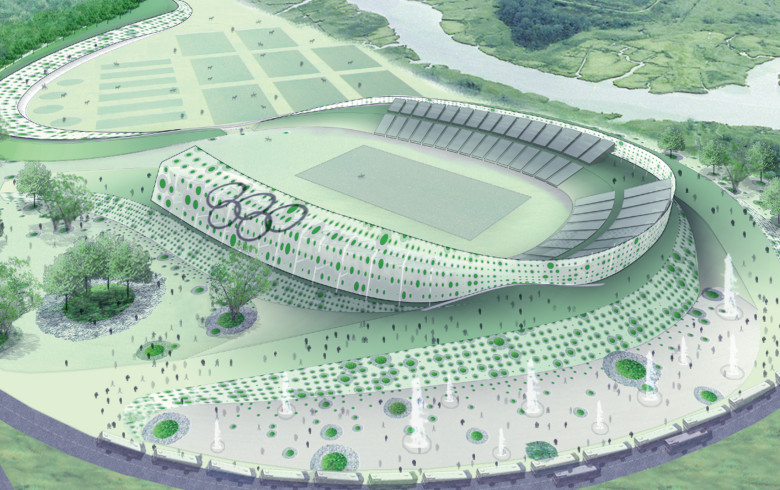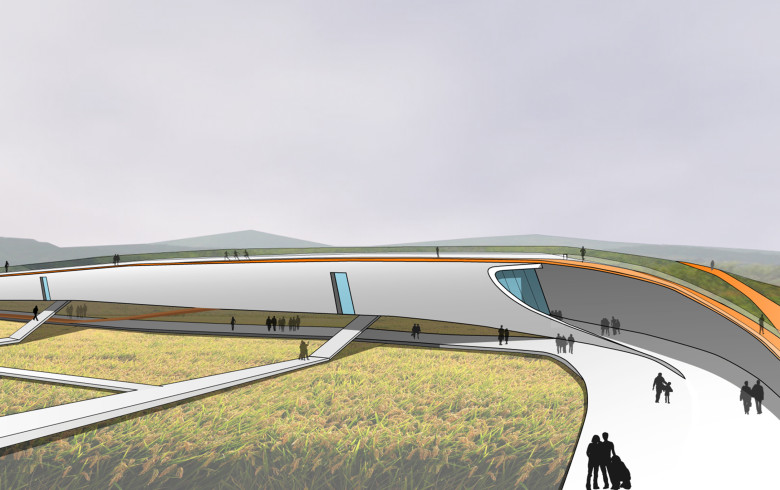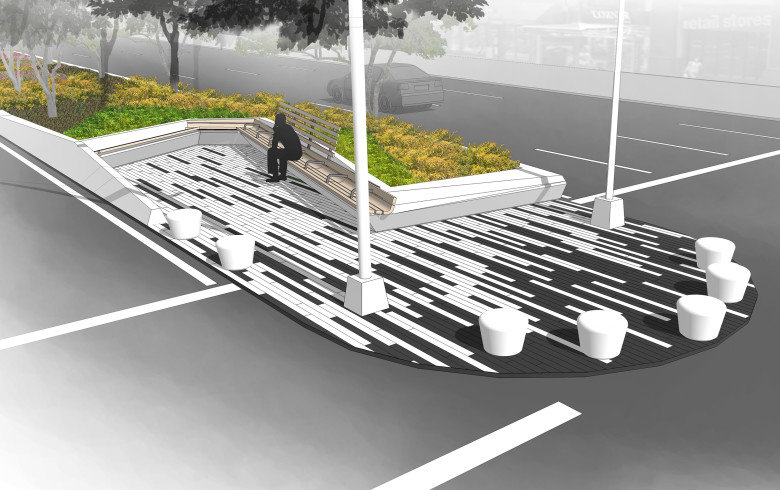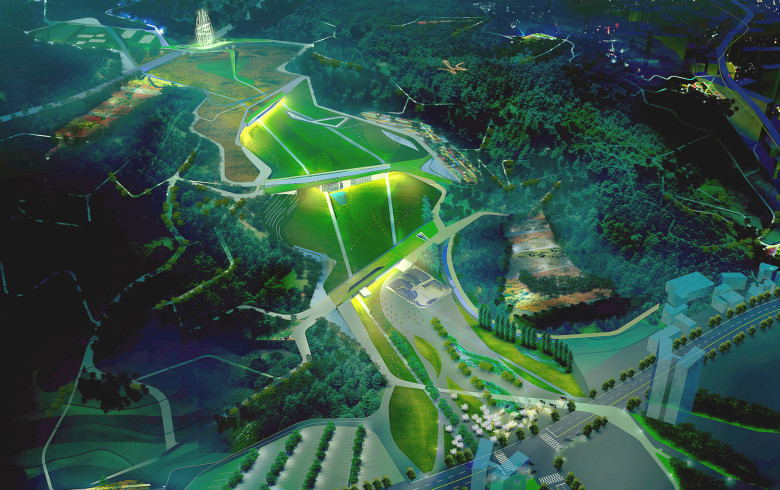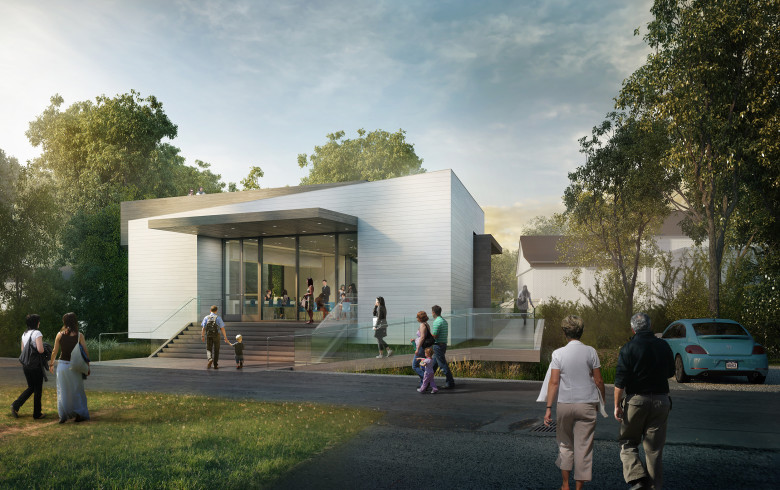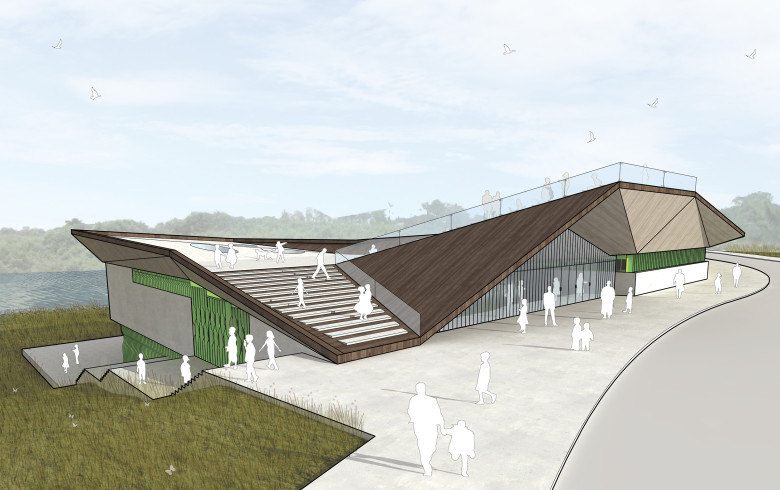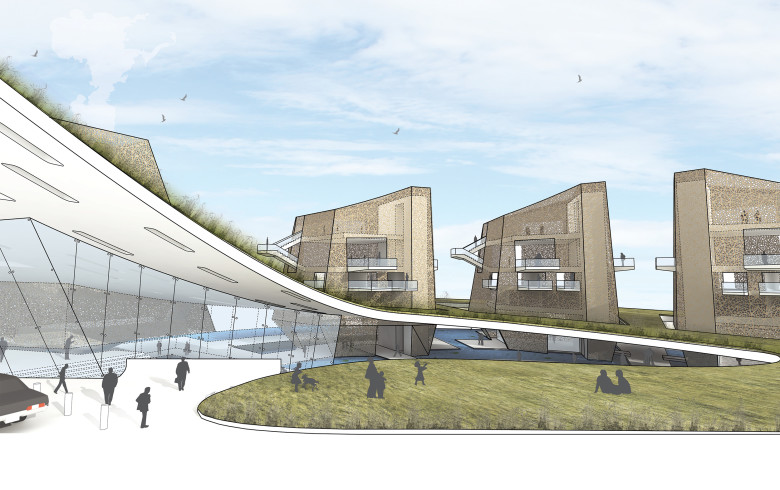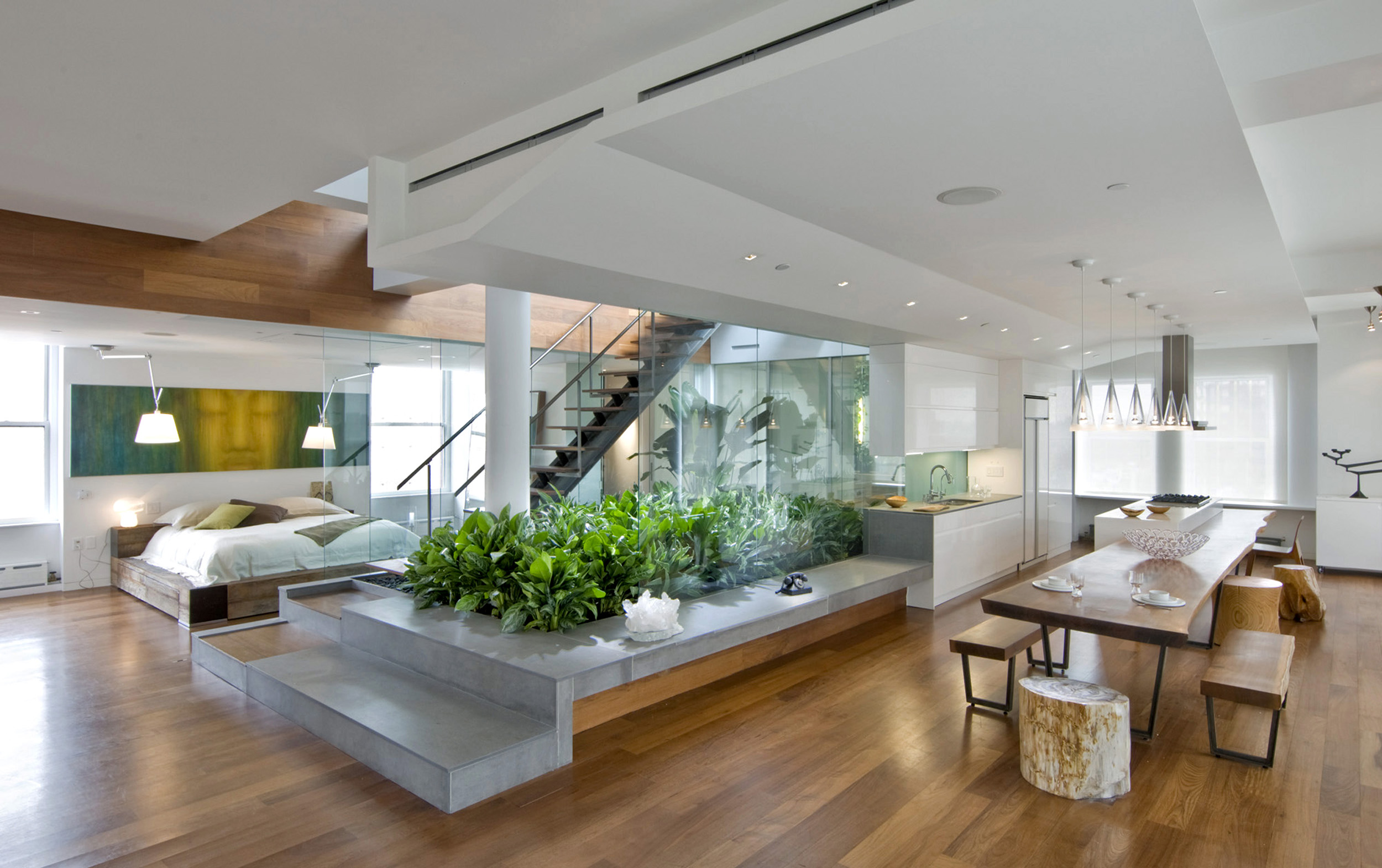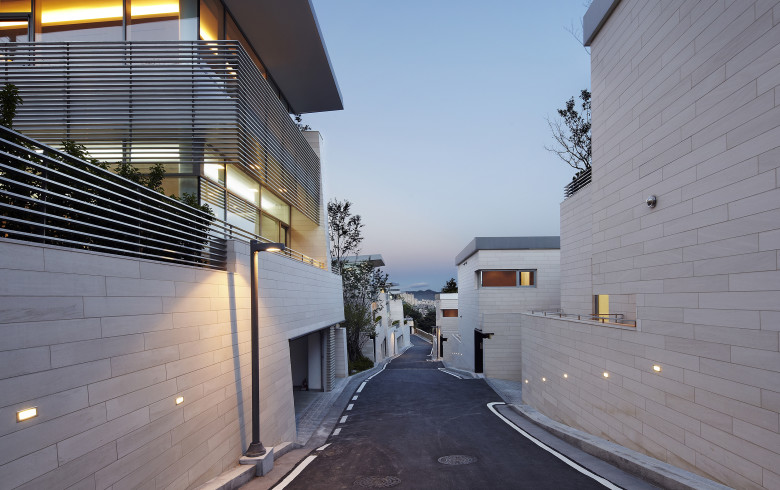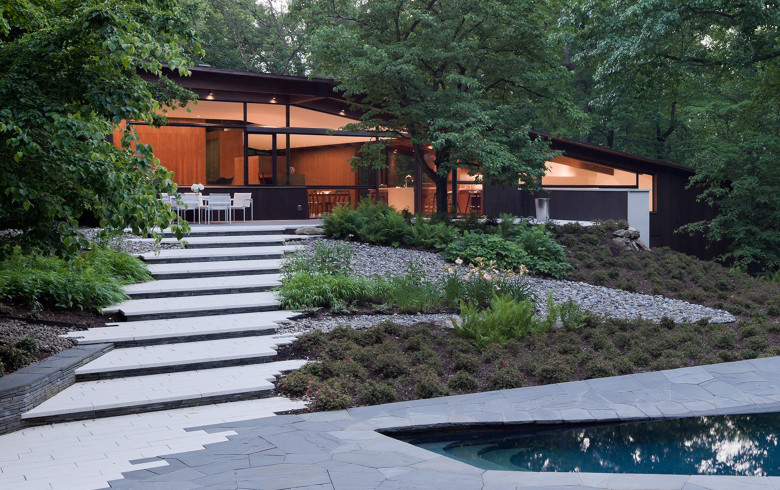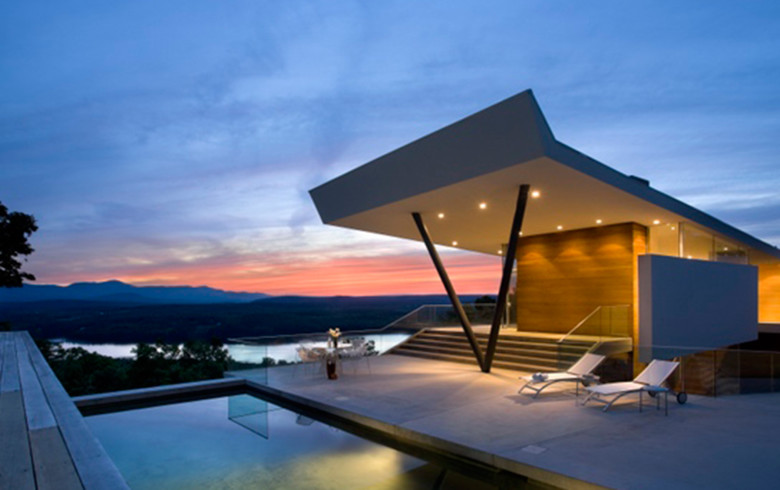Interface: Landscape & Architecture

Interface, a cross-disciplinary design approach championed in “Groundwork: Between Landscape and Architecture,” is an urgent appeal for designers to pursue a cross-disciplinary design approach that overcomes the false professional dichotomy between architecture and landscape. An integrated practice of landscape and architecture can have dramatic environmental consequences: the ecological role of both ceases to be a separate agenda and allows for buildings and landscapes to perform as linked interactive systems that heal the environment.
In addition, the prospect of integrated practice promises to be a catalyst for creativity. For too long, buildings in the West have with rare exceptions been conceived of as isolated objects that float in semi-naturalistic landscapes. Considering building and landscape as reciprocal entities can instigate the invention of an innovative landscape/architecture design vocabulary that overcomes this longstanding dichotomy.
For the most part, sustainable design tends to foster a product-oriented mentality, evaluating materials and techniques on the basis of their performance and efficiency while rarely taking into consideration issues of form and human use. Interface promises take green design to a new level. Instead of adhering to a list of LEED certified materials and techniques, Interface proposes the invention of an innovative landscape/architecture design vocabulary that taps into the formal and programmatic potential of sustainable design principles.
But the goal of inaugurating inventive modes of interdisciplinary practice can only be achieved by first understanding and then transcending the historical roots of this way of thinking. In the introductory essay to Groundwork “Human/Nature: Wilderness and the Landscape/Architecture Divide,” Sanders argues that the problematic division of architecture and landscape into independent disciplines in the United States can be traced to a deep-rooted Western polarity that opposes humans and nature and as a consequence buildings and landscapes. By positing that the human is entirely outside the natural, designers are confronted with a fundamental paradox: how to reconcile the ideal of untouched nature with the imprint of human design?
In the US, this notion that nature and design are incompatible has had professional consequences: since the 19th century landscape and architecture have been segregated into separate fields. Practitioners on both sides of the divide, from Frederick Law Olmsted to Mies van de Rohe, have for the most part conceived of buildings as man-made objects that float in seemingly untouched naturalistic environments. The result has been a deep and persistent suspicion of designed nature that still endures today.
Designers must radically readjust their ways of thinking and working. We must adopt the more complicated viewpoint advanced by progressive scholars and scientists: a recognition that nature and civilization, although not the same, have always been intertwined and are becoming more so. Climate change reveals that there is not a square inch of the planet that does not in some way bear the imprint of humans. Landscape and culture intermix in various combinations; while constructed elements are more common in urban areas and natural elements predominate in rural zones, organic and synthetic operate as a gradient of differing intensities that forms a continuum across the surface of the earth.
Since 2000, a new way of thinking and working has been gaining momentum. Groundwork attempts to map this trend by assembling in one volume the work of a wide range of international architects and landscape architects some who all share an interest in dissolving traditional distinctions between building and environment.
This interest in the alliance of landscape and architecture also informs JSA projects at a range of scales, from private residences to public parks. For us landscape does not necessarily presuppose working with trees and plants but is a question of articulating the relationship between indoor and outdoor space. If architects tend to concern themselves with the design of closed spaces, and landscape architects with open spaces, Interface focuses on the threshold where the two come together. Our objective is to come up with unified spatial and programmatic concepts that treat both interior and exterior, buildings and landscapes as deliberately designed human constructions that shape human experience.
Most important, rather than regard landscape as an afterthought in the design process, our alternative model of professional practice enlists teams of qualified architects, landscape designers and engineers to collaborate on projects that from their very inception employ sustainable design principles to generate designs with unified formal and programmatic strategies for weaving together people, buildings and sites.
